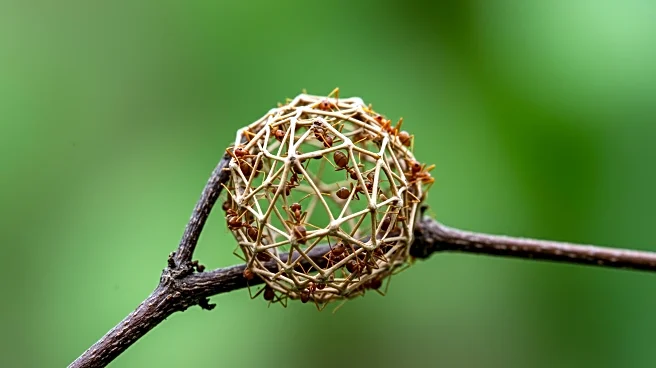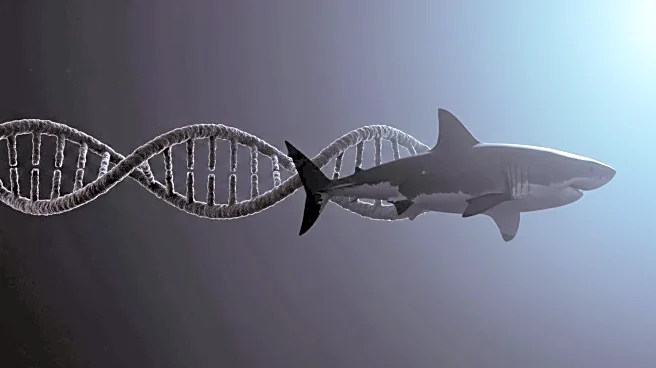Rapid Read • 8 min read
Weaver ants, known scientifically as Oecophylla smaragdina, have demonstrated a unique ability to increase their power output when working in teams, contrary to the typical decline in individual productivity seen in larger groups. Research conducted by Chris Reid and his team at Macquarie University in Sydney, Australia, involved offering these ants paper leaves to simulate their natural nest-building process. The study found that while an individual weaver ant can pull nearly 60 times its body weight, a team of 15 ants can each pull over 100 times their body weight. This significant increase in force contribution per ant challenges the Ringelmann effect, a principle suggesting that individual productivity decreases as group size increases.
AD
The findings about weaver ants' teamwork capabilities could have broader implications for understanding collective behavior in nature and potentially inform human team dynamics. The ability of these ants to defy the Ringelmann effect suggests that certain structural or behavioral adaptations can enhance group efficiency. This insight could be valuable in fields such as robotics, where mimicking biological systems can lead to more effective designs. Additionally, understanding the mechanisms behind the ants' enhanced force output could inspire new strategies in engineering and collaborative work environments, potentially leading to innovations that improve productivity and efficiency in human teams.
Further research is needed to fully understand the mechanisms that allow weaver ants to increase their force output in groups. Scientists may explore whether similar principles can be applied to other species or even human teams. The study opens avenues for investigating how different species overcome the limitations of the Ringelmann effect, which could lead to breakthroughs in optimizing team performance across various domains. Additionally, the potential applications in robotics and engineering could be explored, with researchers looking to replicate the ants' teamwork strategies in artificial systems.
The study of weaver ants also touches on broader ecological and evolutionary questions. Understanding how these ants have evolved such efficient teamwork strategies could provide insights into the evolutionary pressures that shape social behavior in animals. Moreover, the research highlights the importance of studying natural systems to uncover principles that can be applied to human challenges, emphasizing the interconnectedness of biological and technological advancements.
AD
More Stories You Might Enjoy












